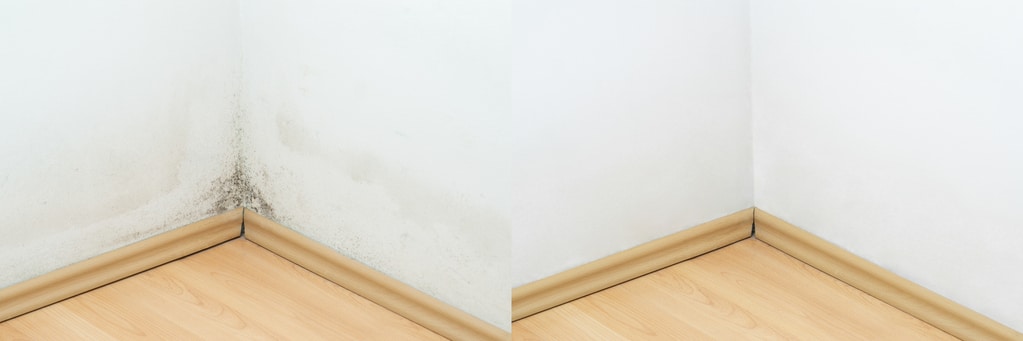The summer season brings long evenings, outdoor adventures, and time with family and friends. But for those with allergies or asthma, summer also introduces unique challenges. While many people usually associate allergies with spring pollen, mold spores are a less obvious but equally important trigger, and they can thrive during the warmest months of the year.
At Allergy & Clinical Immunology Associates, we know that allergies don’t take the summer off. Our goal is to help families understand where mold is most likely to appear, why it causes reactions, and how to minimize its impact while still enjoying favorite seasonal activities.
 Why Mold Becomes a Problem in Summer
Why Mold Becomes a Problem in Summer
Mold is a natural part of the environment. It helps break down organic matter outdoors, but when spores are inhaled, they can cause uncomfortable symptoms for sensitive individuals. Common reactions include sneezing, nasal congestion, itchy or watery eyes, coughing, and, in some cases, asthma flare-ups.
Summer weather creates an ideal setting for mold growth. Warm temperatures paired with periods of rain or high humidity give mold the moisture it needs to multiply. Unlike pollen, which has a peak season, mold spores can linger throughout the summer and well into fall — especially in damp, shaded, or poorly ventilated areas.
Everyday Summer Activities That Can Trigger Mold Exposure
Families often encounter mold in places they least expect. Understanding where mold is usually found can help you take steps to reduce exposure:
Camping Trips
Camping is a favorite summer tradition, but it can come with hidden mold risks. Tents, sleeping bags, and backpacks that were stored while damp can grow mold while packed away. Once opened, spores become airborne, leading to potential allergic reactions. Campsites themselves — particularly wooded, shaded areas — are naturally prone to mold growth because of soil moisture and decaying leaves.
Firewood Storage
Many families keep a pile of firewood ready for summer bonfires. When wood is stacked directly on the ground or left uncovered in the rain, it easily traps moisture. Mold growth on firewood can go undetected until logs are handled, releasing spores that can irritate the nose, throat, and lungs.
Picnic and Play Areas
Public parks, picnic shelters, and your own backyard can be hotspots for mold. Wooden picnic tables, playground equipment, and shaded benches may hold moisture after storms. This can lead to mold exposure without you even knowing it.
At-Home Storage Spaces
Summer storms and humidity can seep into basements, garages, and sheds. Items like coolers, patio cushions, or lawn chairs stored in these spaces may develop mold if not dried properly. This means that simply pulling gear out for a barbecue or pool party can introduce spores into your home environment.
How Mold Spores Affect Allergy Sufferers
For most people, a little mold might go unnoticed. But for those with allergies or asthma, exposure can significantly impact comfort and health. Mold spores act like other airborne allergens — when inhaled, they trigger an immune response. This can lead to:
- Respiratory irritation – sneezing, runny nose, and congestion.
- Eye irritation – itchy, watery, or red eyes.
- Skin reactions – hives or itchy patches in sensitive individuals.
- Asthma symptoms – increased coughing, wheezing, or shortness of breath.
Children and older adults may be susceptible to mold exposure, and repeated contact can sometimes make symptoms worse over time.
Prevention Tips for Local Families
While it’s impossible to eliminate mold, families can take practical steps to keep exposure low:
Keep Gear Clean and Dry
After a camping trip, swim day, or backyard gathering, make sure to air out thoroughly and dry items before storing them. Tents, sleeping bags, picnic blankets, and even reusable grocery bags can retain moisture if packed away too soon.
Store Firewood Correctly
If you keep firewood, stack it off the ground and away from the house. Instead of wrapping it tightly in a tarp, use a loose cover that allows air to circulate. This reduces moisture buildup and discourages mold.
Prepare Picnic Spots
Before using outdoor tables or benches, please give them a quick wipe-down, especially after rainfall. Bringing along a waterproof tablecloth can also create a barrier between surfaces and your food.
Manage Indoor Humidity
A dehumidifier can be particularly helpful in basements, garages, or other storage spaces prone to dampness. Try to keep indoor humidity levels below 50%. Good airflow and ventilation go a long way toward preventing mold from spreading.
Change and Shower After Outdoor Fun
After spending time in wooded, shaded, or damp areas, it’s a good idea to change clothes and shower. This helps wash away any spores that may have settled on your skin or clothing.
When to Seek Medical Guidance
If you or your child experience allergy symptoms that seem worse after summer activities — especially after being near damp areas, camping gear, or firewood — mold could be a factor. Symptoms that persist beyond a few days, interfere with daily activities, or worsen asthma should not be ignored.
At Allergy & Clinical Immunology Associates, we provide testing and personalized treatment options to help patients identify triggers and find relief. Whether it’s mold, pollen, or another allergen, understanding the cause is the first step toward managing your symptoms and enjoying a healthier summer.
Schedule an Allergy Consultation Today!
Summer is a time for making memories outdoors, not for dealing with frustrating allergy flare-ups. By staying mindful of how mold grows and where it hides, families can take proactive steps to reduce exposure. Simple changes, like drying gear, covering firewood, or managing humidity in your home, can make a big difference in comfort and health.
If you suspect mold allergies are affecting your summer activities, we encourage you to schedule a consultation with our team. Together, we’ll help you find strategies and treatments that support your lifestyle while minimizing symptoms.